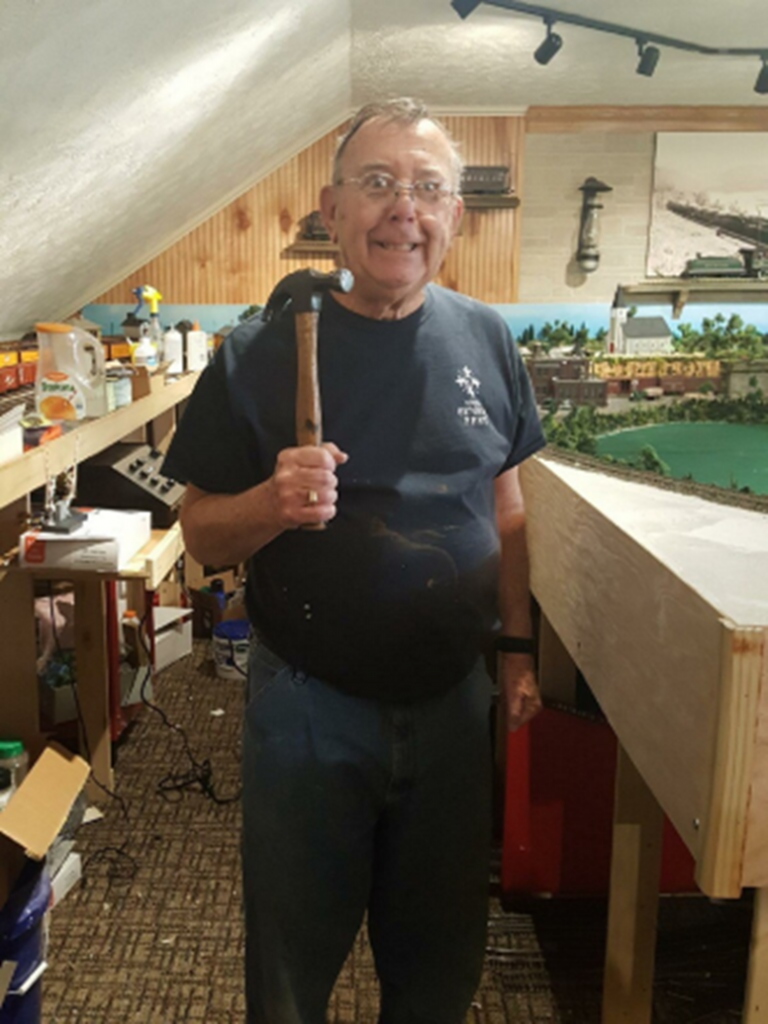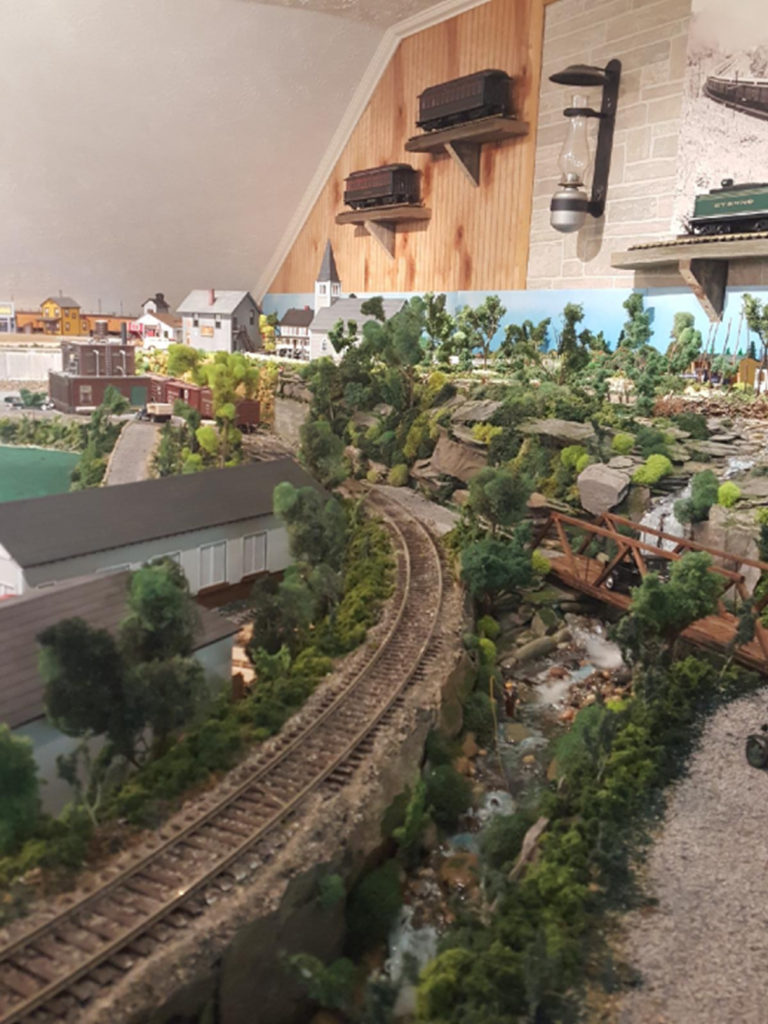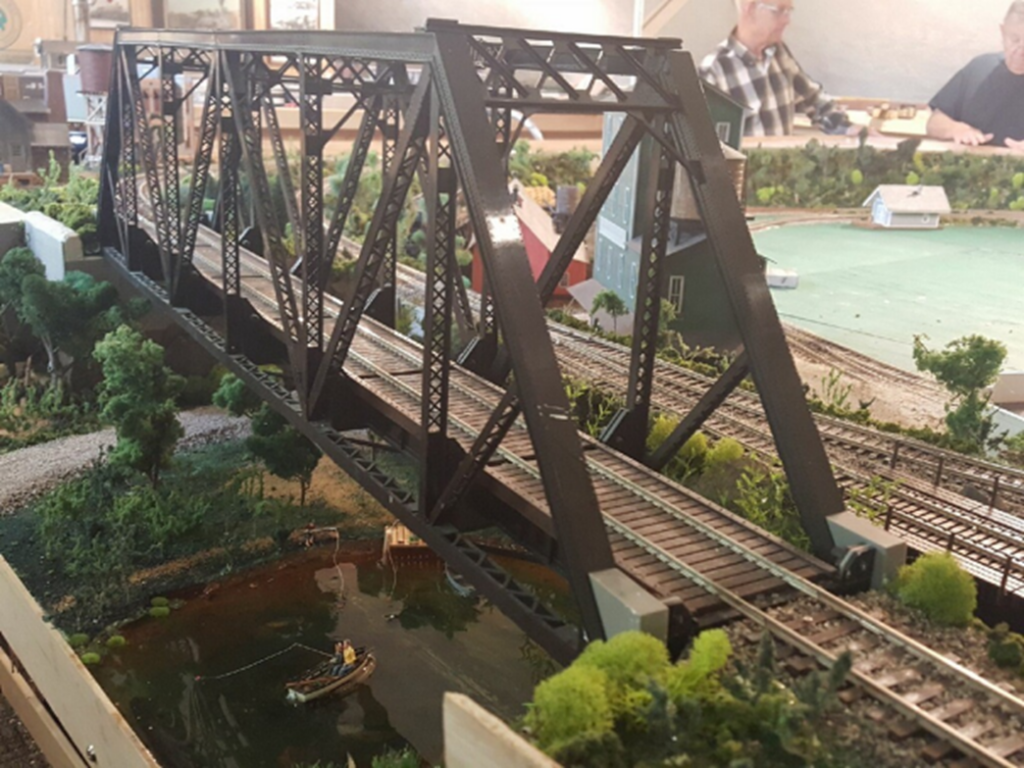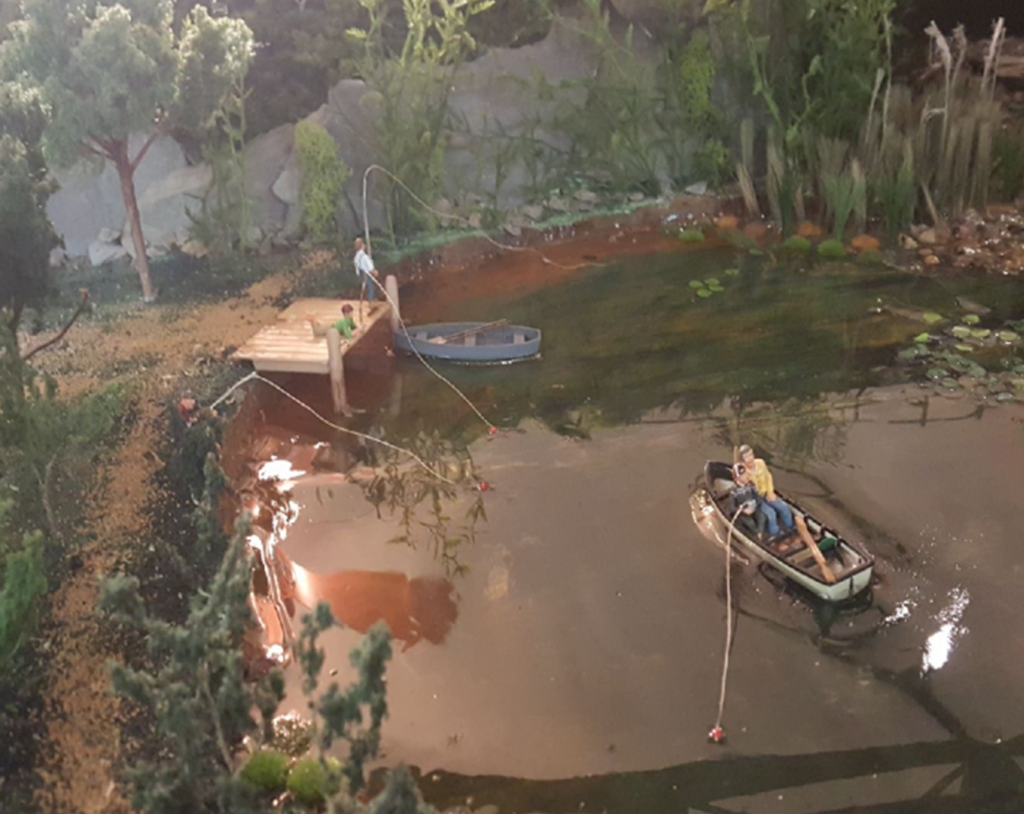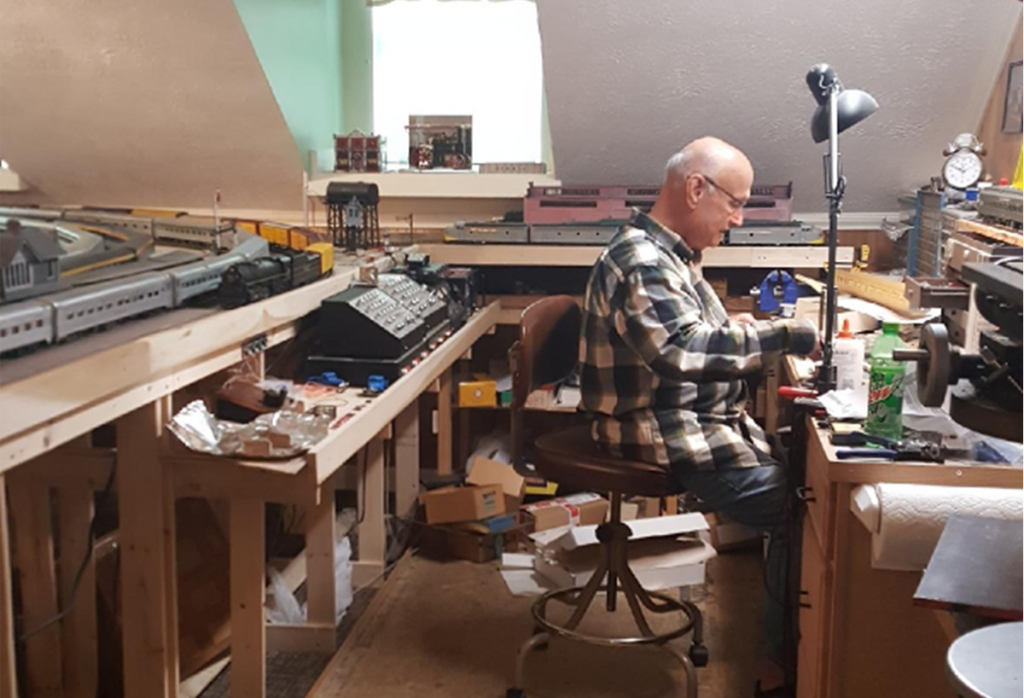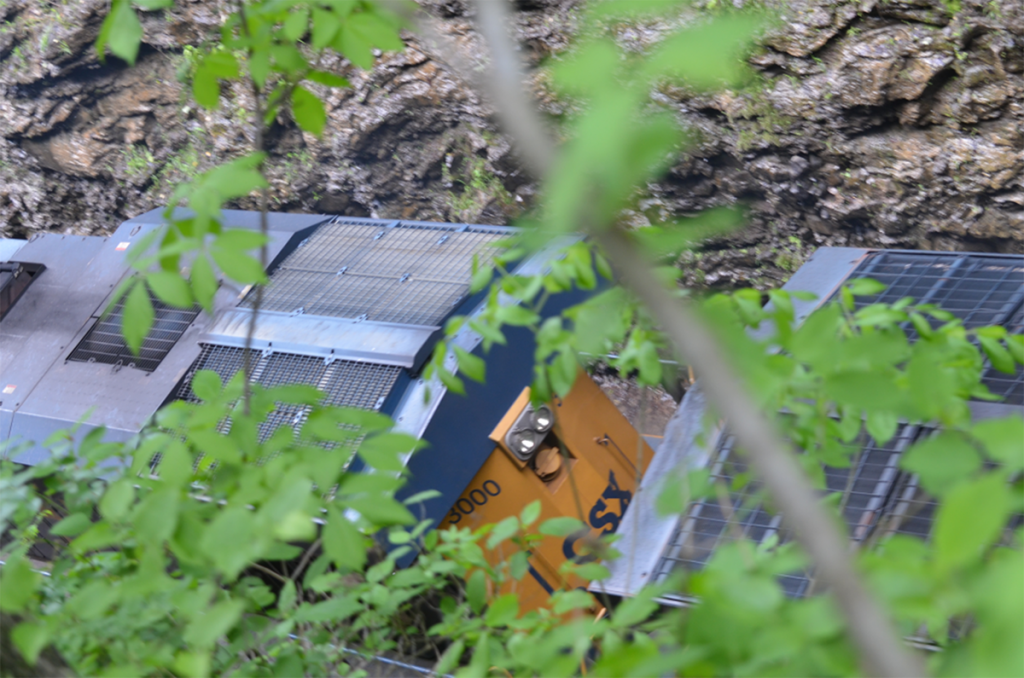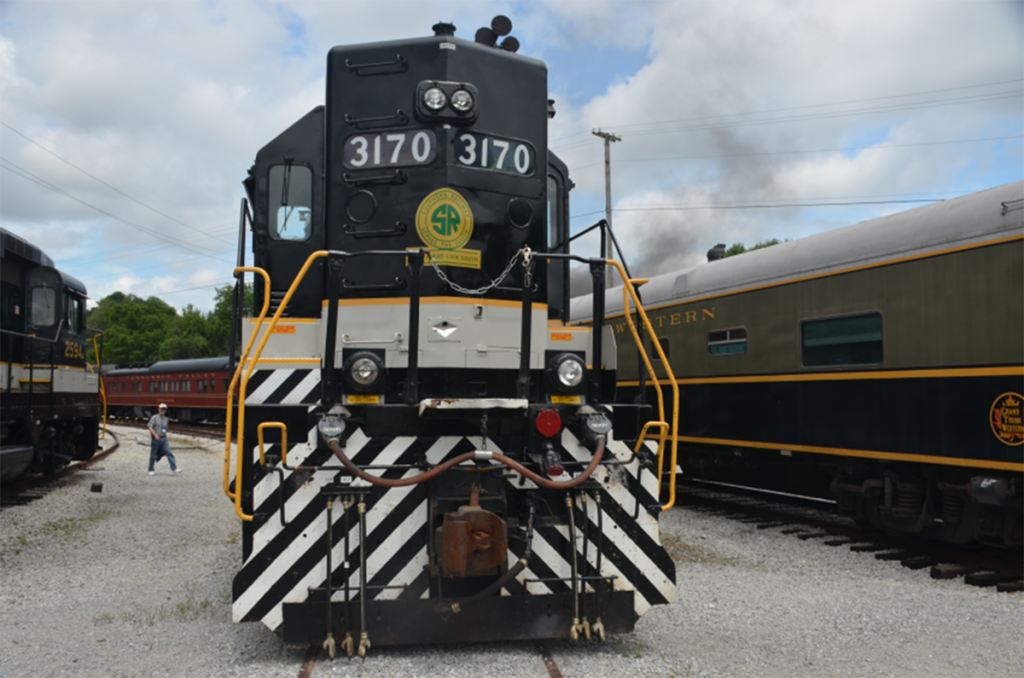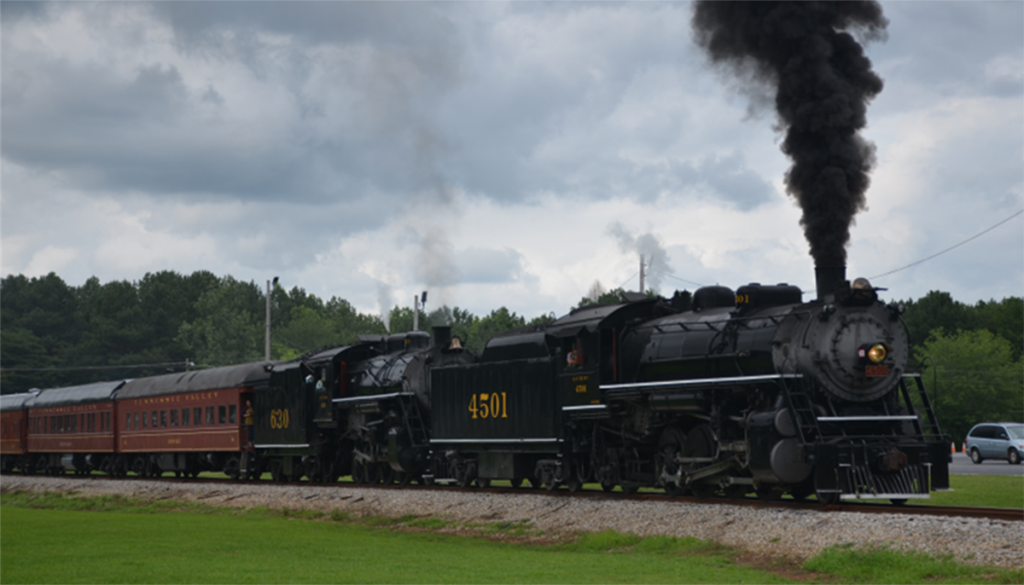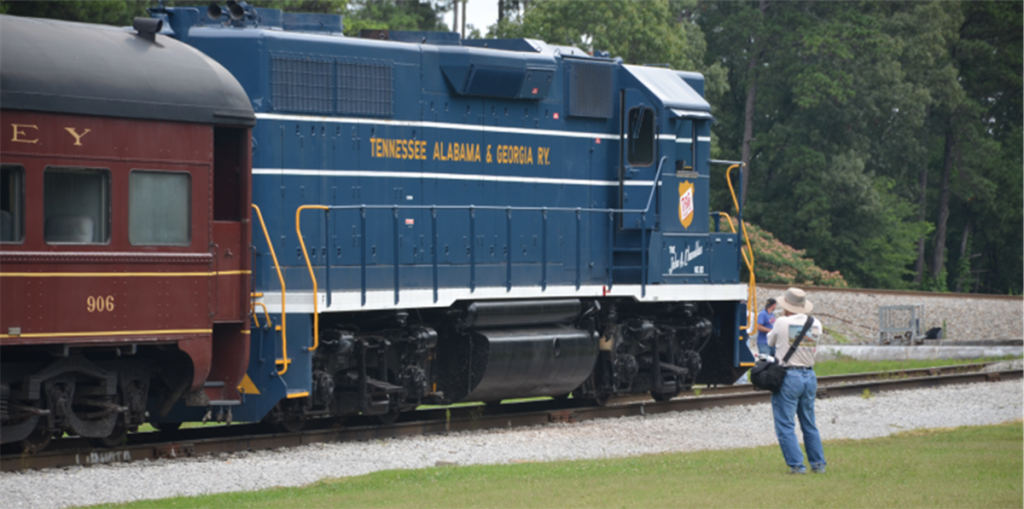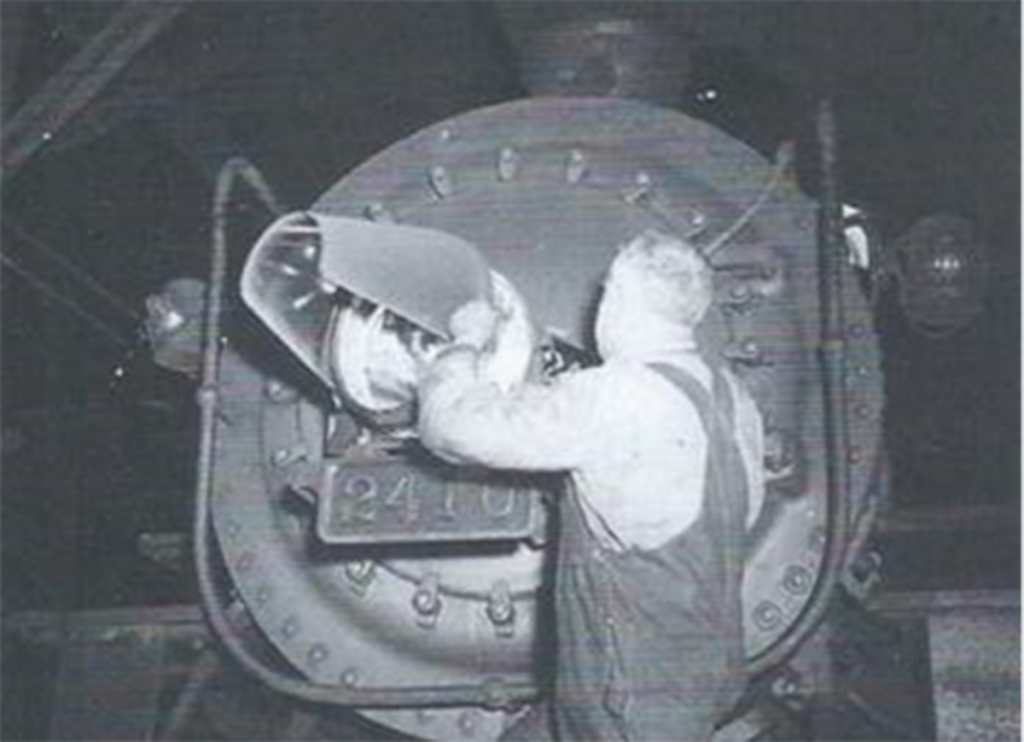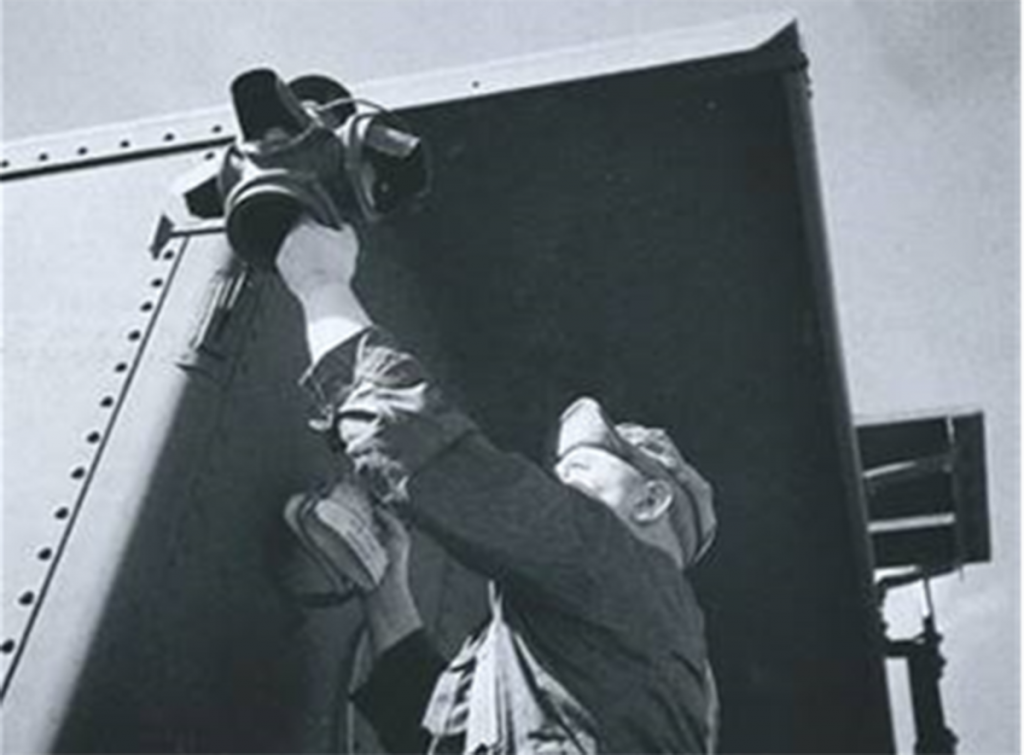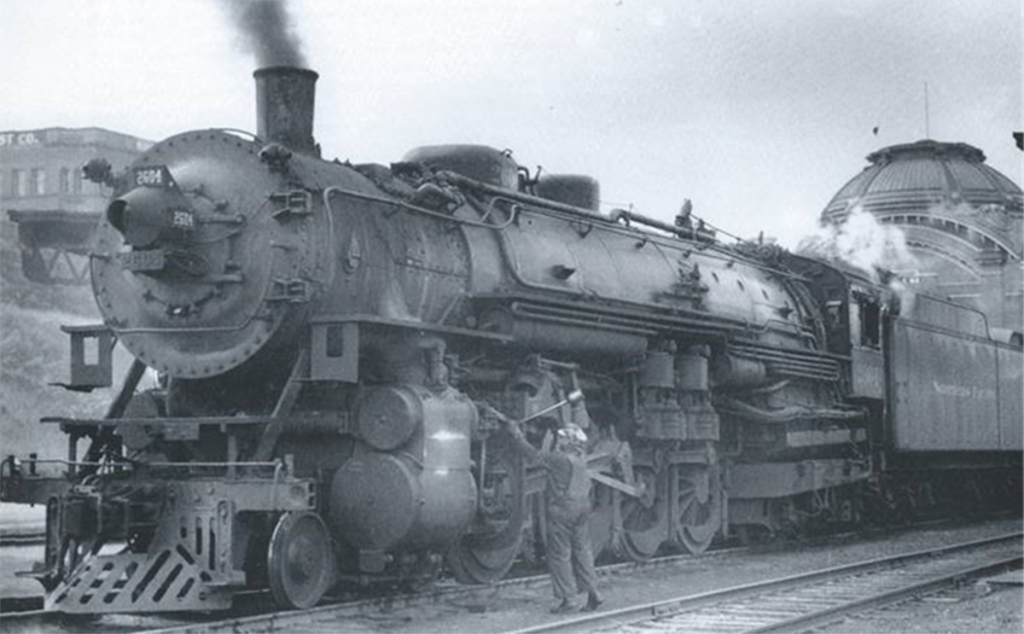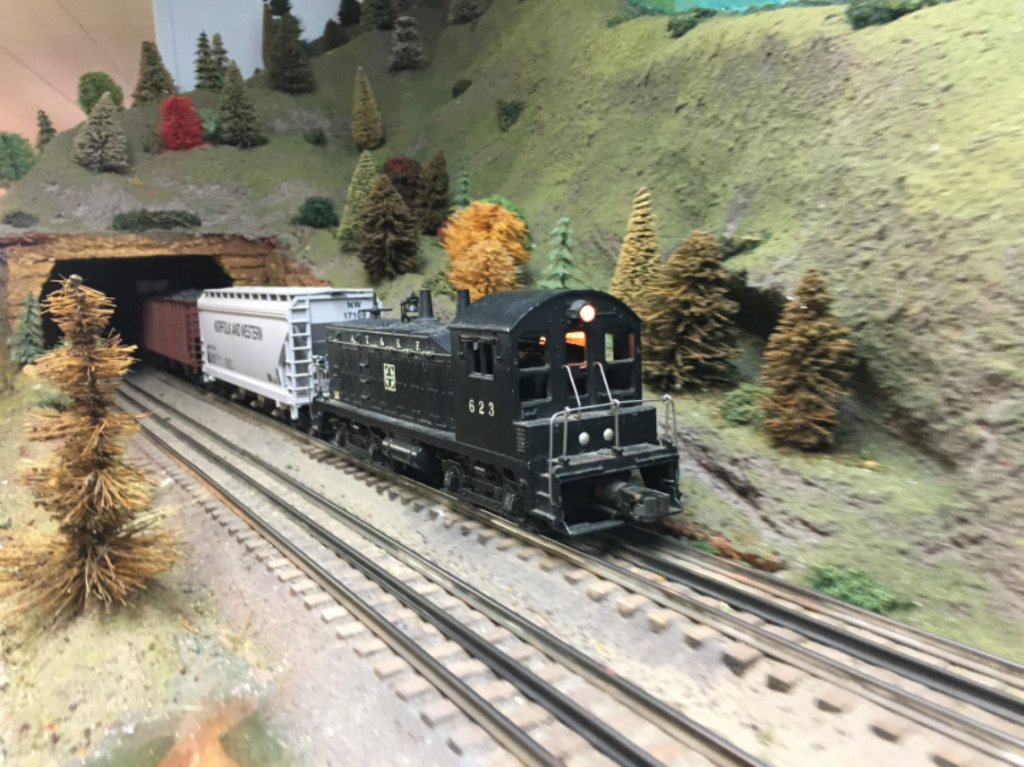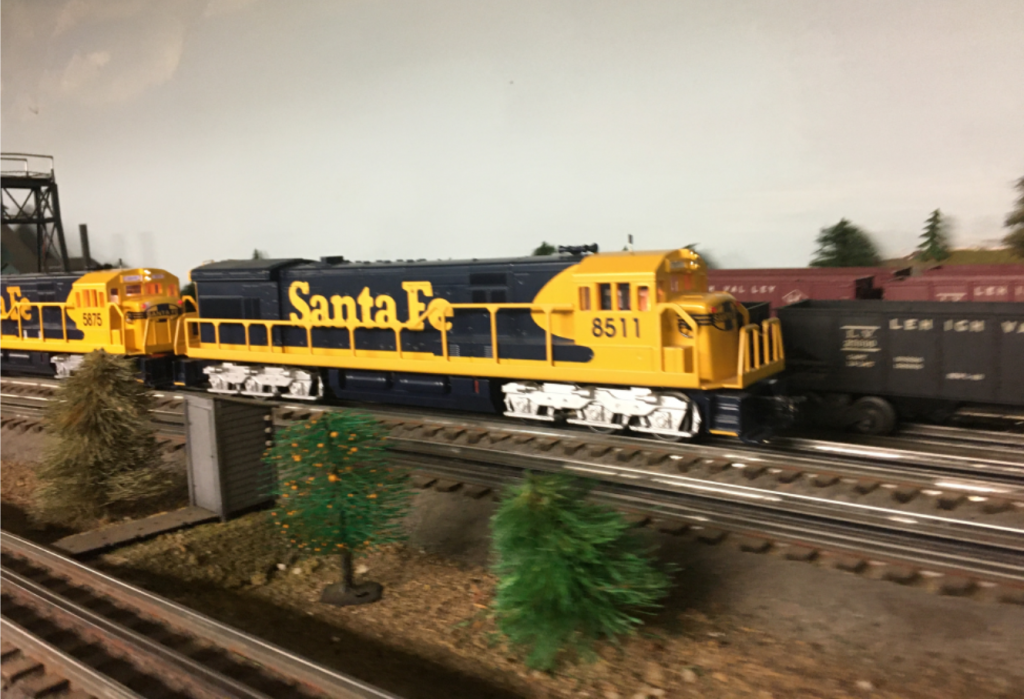Former chapter member Bill Heaton has developed his O scale layout with the help of his friend, Bob Welch, who works on the scenery. As you may remember, Bill is a fine scale, rivet counting modeler! Click on any picture for a larger view!
Year: 2020
The first photo I shot from a tree at the north portal of Ridge Top Tunnel, Ridge Top, TN. It was more like hanging from a tree as the CSX locomotive passed underneath me. I no longer advocate taking pictures from trees.
Photo by William Farrell, 2018. (Editor’s note: I thought this was just a lot of super-elevation!)
The other three photos were shot at the Tennessee Valley Railroad Museum back in 2017. – Photos by William Farrell
Submitted by Gary Ostlund – After Pearl Harbor and the start of World War II, the railroads quickly took measures to protect themselves. Note the hoods over the locomotive headlight and marker lights. Even the small classification lights on the locomotive’s smokebox are hooded.
Not long after the December 7th attack the Japanese gained a foothold far out on the Aleutian Islands. With the threat of further air attacks railroads took these precautions along with shielded fireboxes, and blackened windows on passenger equipment.
On the civilian side, city street lights and windows were darkened. American and Canadian military forces building the ALCAN Highway deliberately built curves in the road to hinder the ability of enemy aircraft strafing convoys. Some of those curves were still visible in 1973.
Credits: NP 2604 at Tacoma – Jim Fredrickson, SP 2470 headlight – Jack Delano, Caboose marker light – Southern Pacific Lines.
I caught this CSX unit coal train at Warrior Coal’s loading facility west of Madisonville, February 3, 2020. I was coming off a school bus route (empty) on the west side of the county. Thus the limited angle and distance from the train. Get coal train pictures while you can! – Photos by Bill Thomas
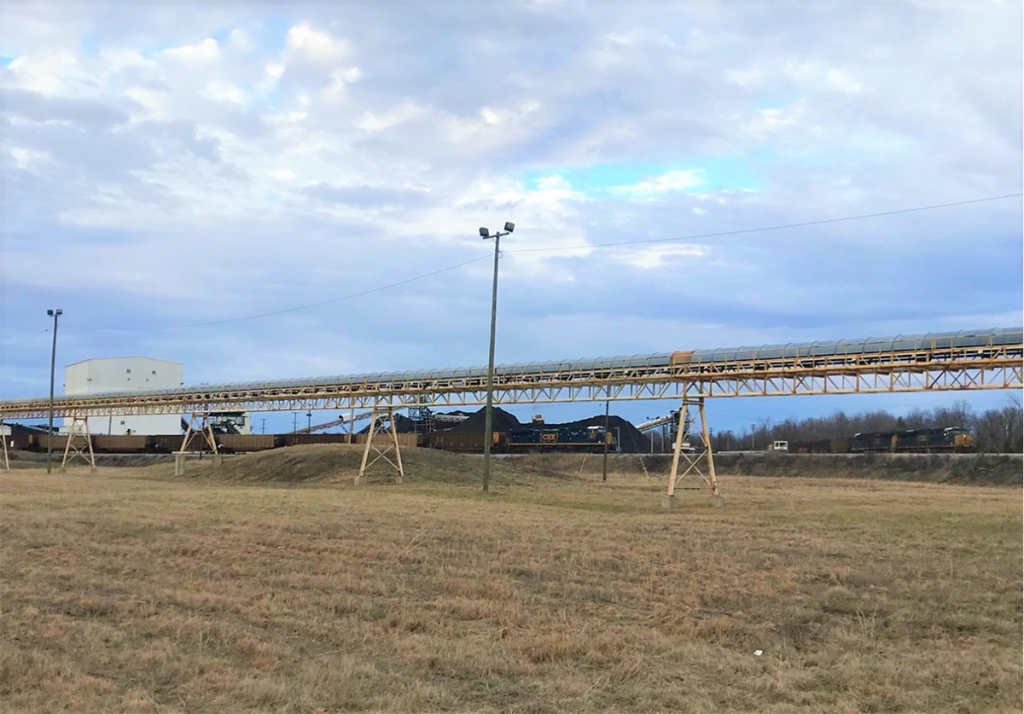
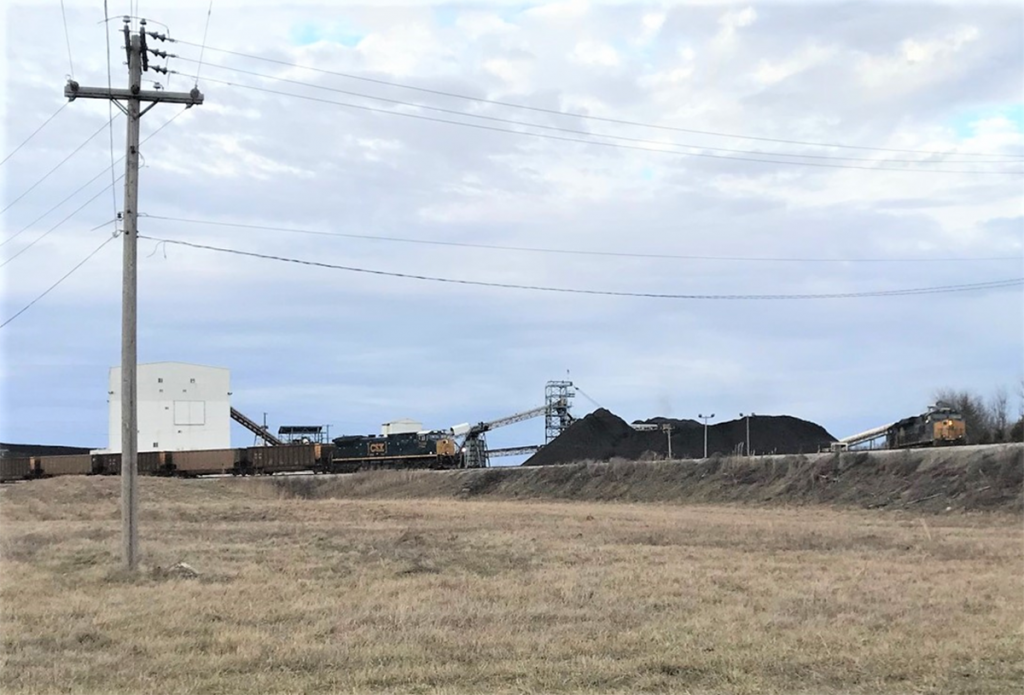

The Hook Line & Singer Garden RR got some needed track work after a long period of deferred maintenance due to budget cuts! Tie replacement was a priority for the short line. – Bill Thomas
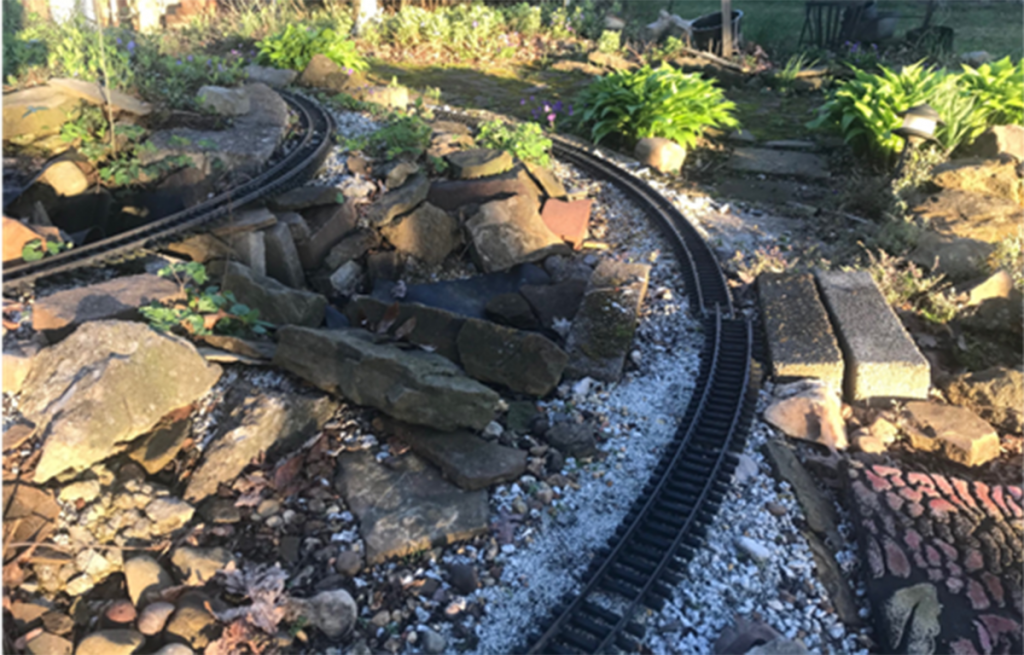
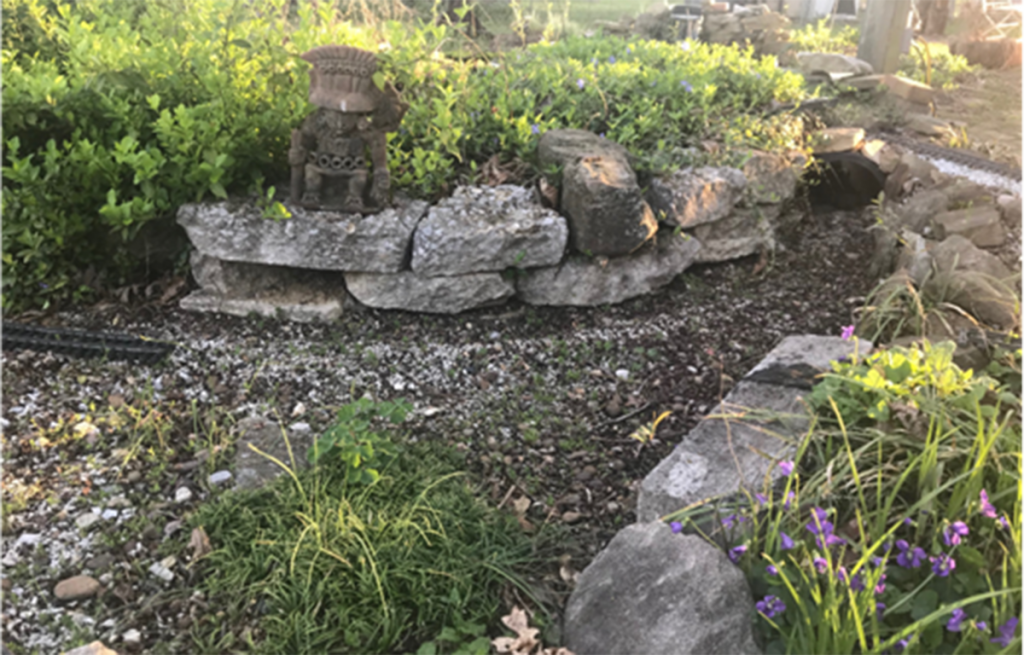
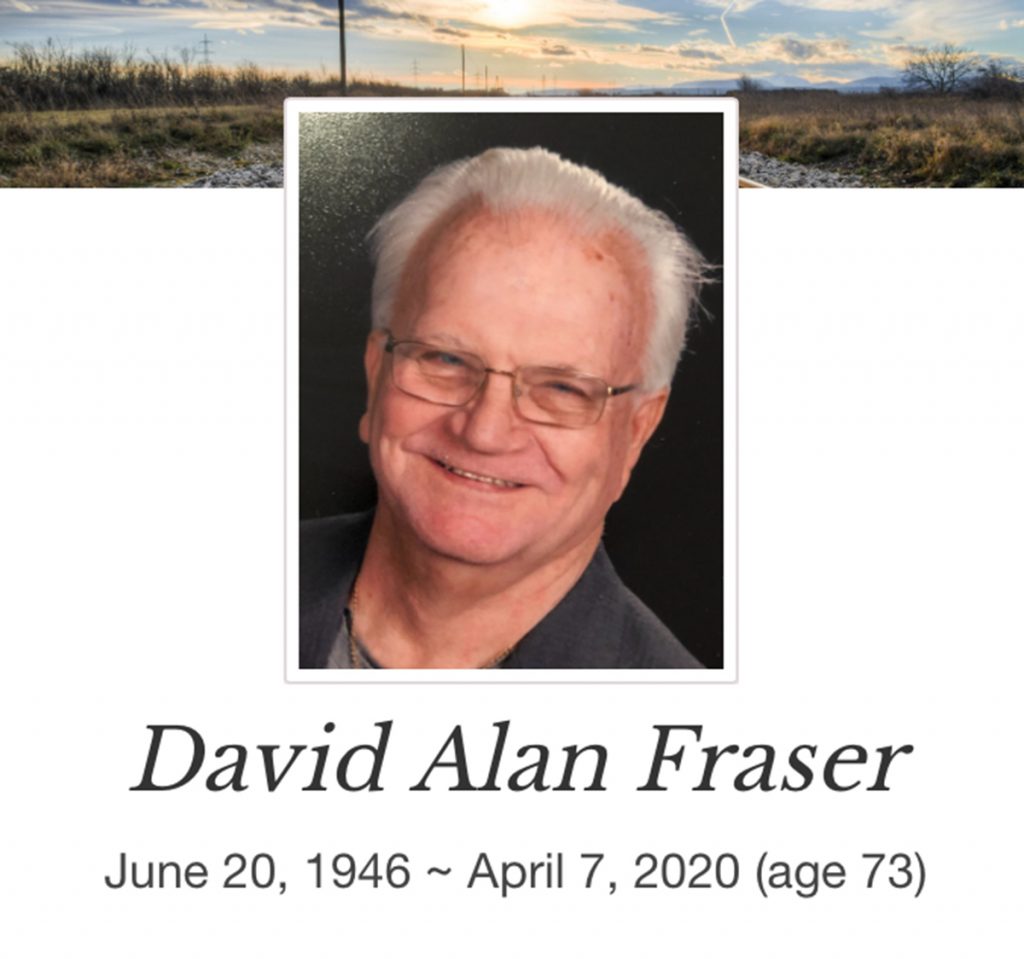
Obituary
David Alan Fraser, 73 of Clay, KY passed away Tuesday, April 7, 2020 at Baptist Health in Madisonville.
David was born in Earlington on June 20, 1946 to the late Emory and Reba Fraser.
He worked at York International where he was an industrial mechanic.
He was a member of the Redeeming Love General Baptist Church in Clay and also a member of Webster County Historical Society, West Kentucky Chapter of the National Railway Historical Society, Civic Club in Earlington and the Earlington Volunteer Fire Department.
Survivors include his wife of 24 years Gayle, 1 son Sean O’Brien (Lisa) of Madisonville, 1 brother John Fraser of Earlington 2 granddaughters Avery and Abigail O’Brien, 1 niece Melanie Fraser and great-niece Avoe Fraser.
Private funeral services will be held. Burial will be in Fraser-Blackwell Cemetery
Memorial contributions can be made to Fraser-Blackwell Cemetery, c/o Ryan Hammack, 93 Old Clifty Road, Clay, KY 42404.
Online condolences can be made at https://www.vanoverfuneralhome.com/obituary/David-Fraser
Our monthly meeting tonight, March 16, 2020, of the West Kentucky Chapter of the NRHS has been canceled due to the station being closed to help combat the spread of the Corona Virus. Please pass the word to other chapter members you know. As of now we will meet next month on April 20th.

A week ago (preceding page), I stumbled portraying the closeness of the Milwaukee Road to the Northern Pacific Railway trackage. The two pictures here are the same location as last week’s Northern Pacific eastbound North Coast Limited, just nosing under the bridge. In both pictures above, the Milwaukee freights are westbound. The tunnel where #22 is exiting is about two car lengths behind the four diesels. If you were to Google-Earth this location you would see the valley is quite constricted here. The river is flowing away from the photographer.
The four diesels are crossing the Yakima River, but will only remain on that side for about a mile. The Milwaukee line continues up the Yakima River Valley, ducks into a short tunnel, follows the shoreline of Lake Keechelus, enters two snow sheds before the 11,789-foot Snoqualmie Pass tunnel. Both railroads enjoy relatively level travel up the valley, the Milwaukee all the way to the long tunnel. Northern Pacific trackage climbs a 2.2 percent grade from just behind the cameraman for about six miles to their Stampede Pass Tunnel.

The NP and Milwaukee do chase each other at various locations in the states of Washington and Montana. They are within sight of each other from the scene in these pictures, Lake Easton to Ellensburg, most of 40 miles. In western Montana for many miles along the Clarks Fork River they are much like double-track in some places, and zip in and out-of-sight for about a hundred miles. They share sides of the Yellowstone River in eastern Montana for about 85 miles.
Picture credits: diesels on bridge by Robert W. Johnston; #22 at tunnel by Dale Sanders

Pride of the Northern Pacific Railway, the eastbound vista-domed North Coast Limited, Train # 26 is drifting down the Yakima River Valley near Easton, Washington. This 1962 shot was taken from an open vestibule by the late great photographer Jim Fredrickson. The nose of the leading unit is under the Milwaukee’s line crossing to the other side of the river. In less than a mile it will bridge back to this side of the river.
The NCL left Seattle at 2:45 PM and has tunneled under Stampede Pass and descended into the scenic valley. It will follow the river for over a hundred miles, and will slip into Chicago Union Station the second afternoon out.
So, if this is the center-piece of the NP’s passenger fleet, why didn’t they paint the third car..? That car is a Slumbercoach, sort of a mini-Pullman, but not a Pullman requiring first-class ticket. Rather, the budget-minded sleeper was available for a reasonable price to coach-class passengers. Imagine 24 single and 8 double rooms, with sinks and toilets in each room, all put into less than 850 square feet of railcar. Accommodations were tight, but you had your privacy, a bed, your own bathroom for a decent price. Justine and I travelled to Butte in 1969 on a house search utilizing the NCL and a double Slumbercoach. Very adequate.
The stainless-steel Budd-built cars were left unpainted so they would stand out prominently. Sort of a “look what we have – that you don’t,” to the other railroads. Slumbercoach space was sold-out more often than not. Amtrak?? Take note.
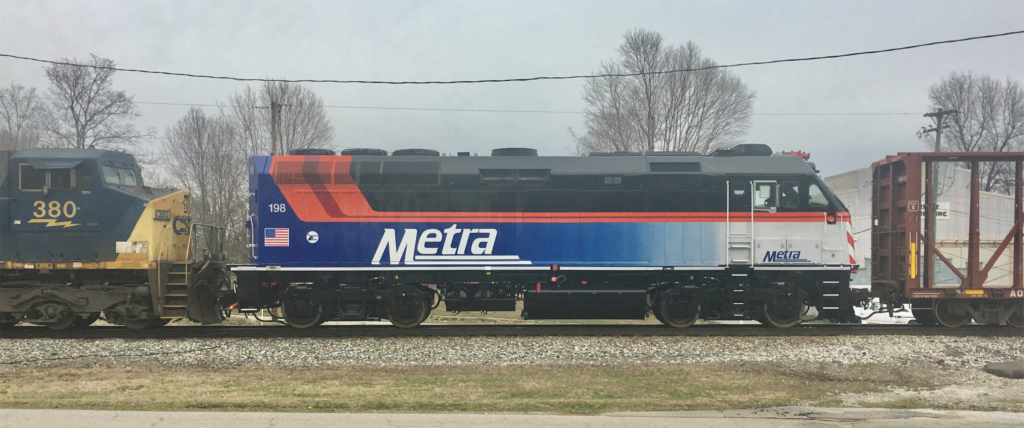
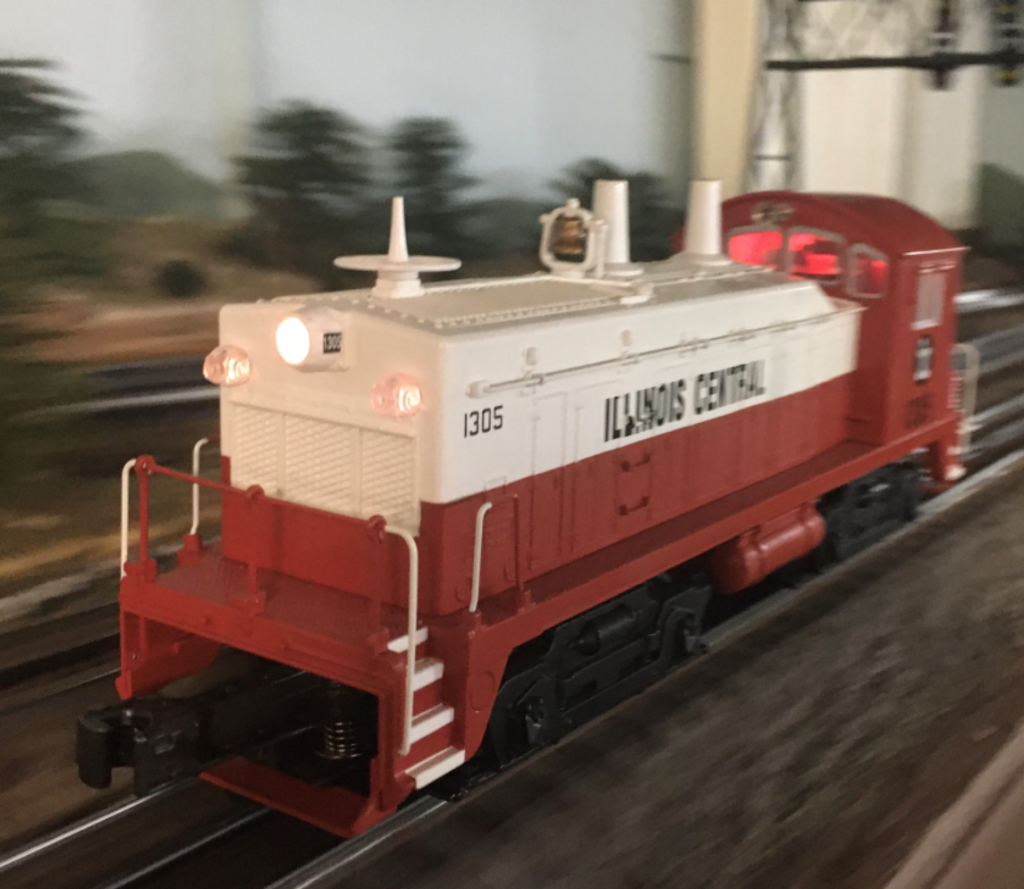
While dad Jonathon watches trains, daughter Harper practices her dance which happens to be at the dance school next to the railroad tracks in Madisonville.
Photos by Jonathon Young.
We had a total of nine entries for the January 2020 chapter photo contest and the chapter members selected the winners during our February meeting.
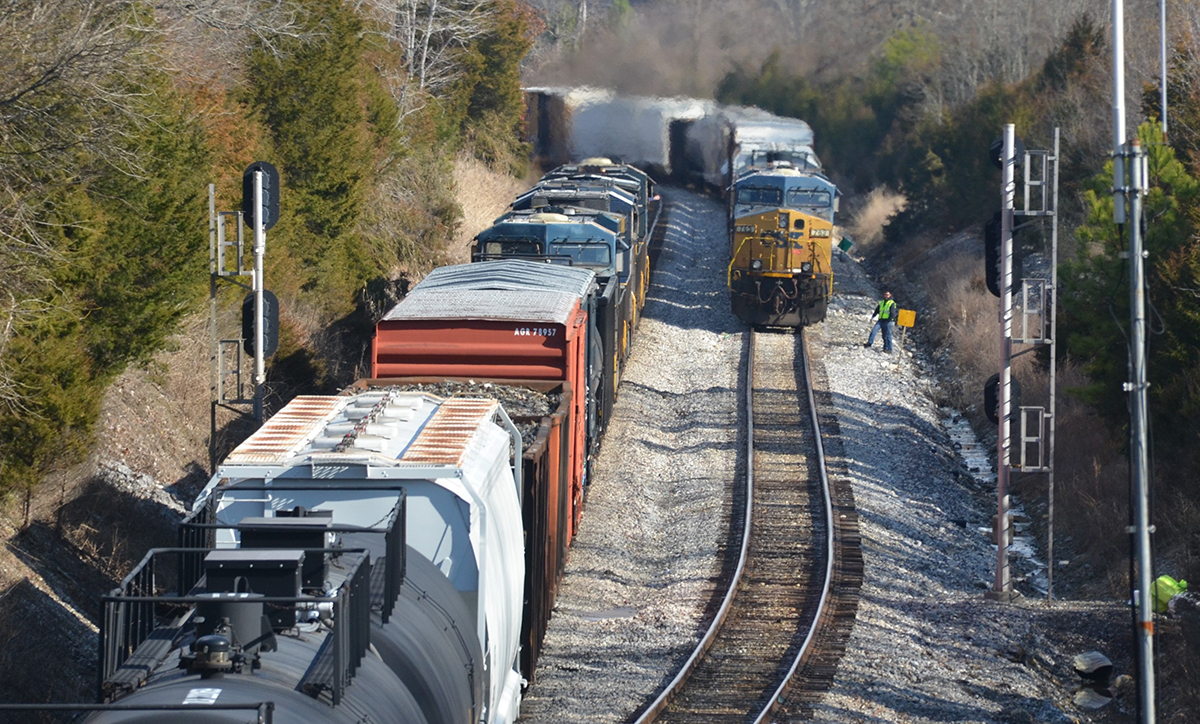
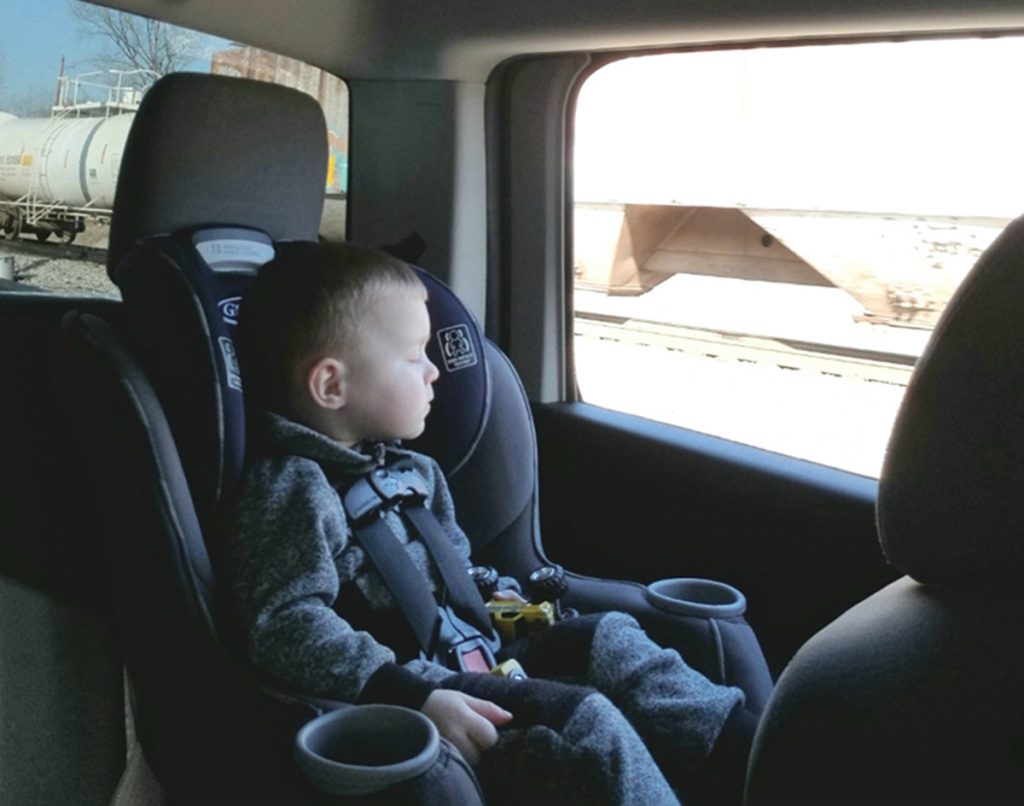
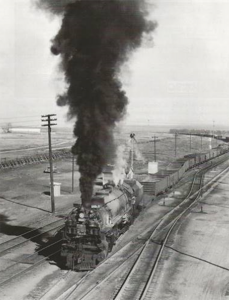
Another craft superseded by technology, automation: Switch-tenders and grade-crossing guards. The grade separation story about Oklahoma City last February included pictures of grade-crossing shanties. Some were rather elaborate, and a certain “ownership” was obvious. Note the Good-Luck horseshoe over the doorway in the picture above, along with the bench for outdoor comfort.
Many if not most of those positions were filled by employees injured on the job. These men were able to remain employed, and achieve their deserved retirement benefits.
The handy broom hanging on the wall does double duty, sweeping dirt out the door, and snow out of switch-points. Switch-Tenders received their instructions for routing incoming trains from the Yardmaster. They usually assisted the “herder” with departing trains.
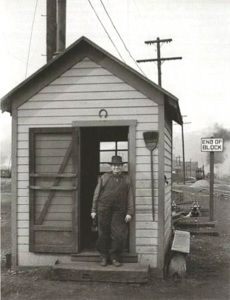
In my home-town, Tacoma, Washington, there was an elevated tower on the double-track that crossed Pacific Avenue, perhaps the busiest street in town. On double track these towers had to be high enough to monitor the movements on both tracks. For years the gentleman manning that tower had a warning system alerting him of snoopy inspectors. He used fish-line to serve as a trip-wire on the steps leading to this elevated tower, whereupon anyone coming up the stairs would jiggle tin-cans or bottles. That way he could wake-up, and/or quickly hide his bottle.
The switchman shanty at East End in the Cheyenne yard is visible behind the smoke and steam escaping from the boiler pressure relief valves. A similar arrangement existed at the other end of the huge yard. – Gary Ostland
Credits: Shanty – Emil Albrecht photo, Don Strack collection, #9040, a three-cylinder 4-12-2 – photo by James L. Ehernberger

